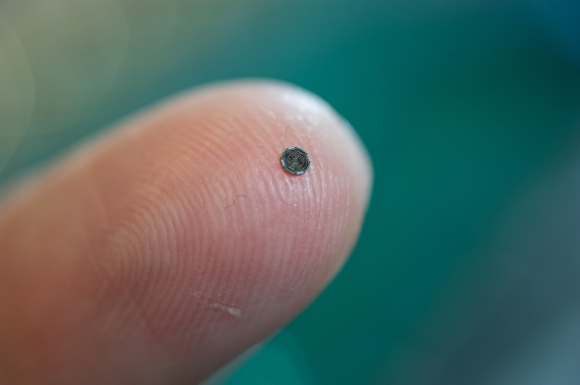Medical imaging goes extra big and extra small in new breakthroughs
posted Wednesday, March 19, 2014 at 2:09 PM EDT

While most of what we hear about with new sensor developments comes from the world of consumer cameras, there's a whole other world devoted to imaging for scientific purposes. Two new developments have pushed the fields of medical imaging in new directions—one for small, and one for large.
A new imaging device out of Georgia Tech could dramatically change the world of internal imaging. It's a tiny 3D "camera", designed for producing a real-time, volumetric study of the internals of a human body. This tiny device could be used to map out blood vessels, and figure out the size and shape of blockages in three dimensions. Rather than a traditional camera, the catheter based device is actually more like a drum. A tiny piece of film flutters on the top of the sensor, sending off sound waves that bounce back and are measured by 100 sensors at 60fps. This data is then interpreted into video, and relayed to the doctor controlling the device.
And it's not just going to be used for blocked arteries. The designers are also pitching the idea of being able to look inside a broken bone that's in a cast in order to be able to tell if it's the right time for the cast to come off.

In a completely opposite direction, you have the new GMAX3005 sensor from a company called GPixel. This extremely long, rectangular "full-frame" sensor is capable of recording 10fps at an incredible 30,000x5,000 pixel resolution. It's limited to black and white, and is specifically aimed at medical, industrial and scientific imaging. According to its specs:
This “wafer-scale” sensor has an astonishing 167.6mm x 30.1mm chip size including 165mm x 27.5mm photon-sensitive area. GMAX3005 has 16-bit on-chip ADC with 12-bit ENOB, and 120 LVDS output pairs running at 200Mbps. GMAX3005 is ideal for applications that require high sensitivity; it reaches a noise level of 4e- with a dynamic range of 75.4dB, and over 70% quantum efficiency at 550nm wavelength. GMAX3005 has a dark current as low as 10e-/s/pixel at 32ºC, which makes long exposure possible even without active cooling.

Now, neither of these devices are going to be something that will come to a normal camera at any point in the near future. But at the same time, it's fascinating to see what the industry side of imaging is working on, and how it relates back to the sort of photography that we're more used to.
(via Wired, PhotographyBlog)